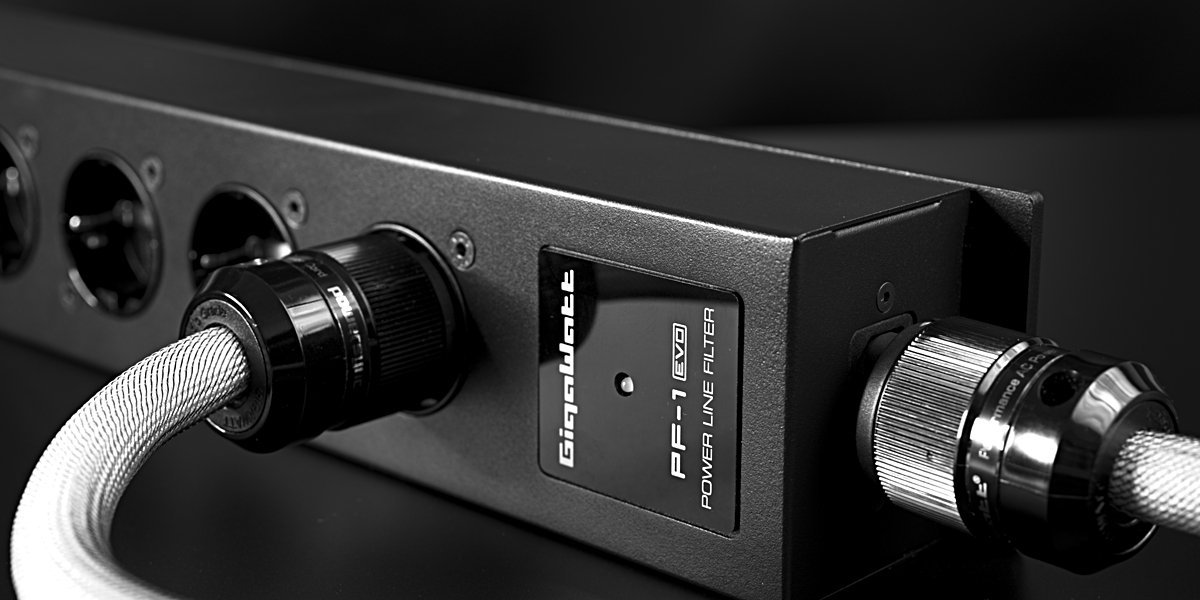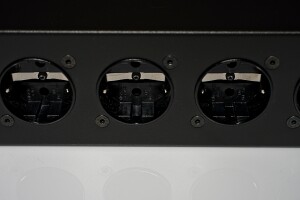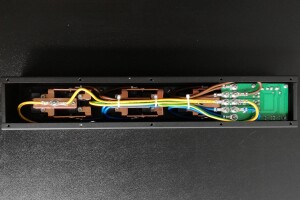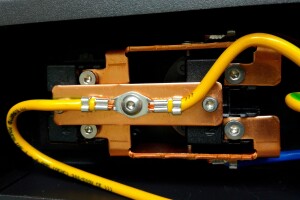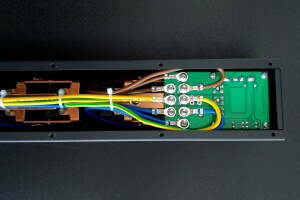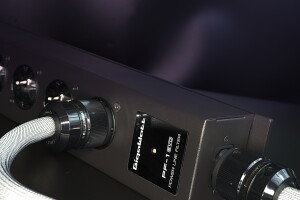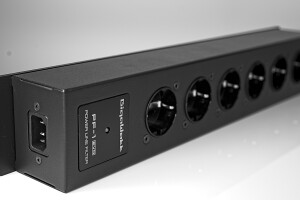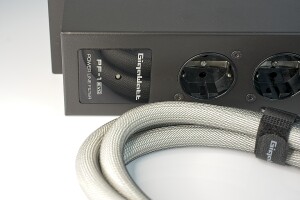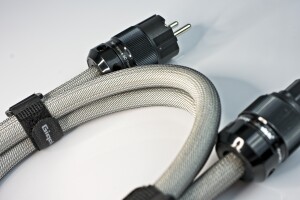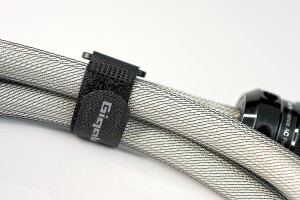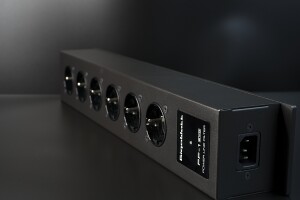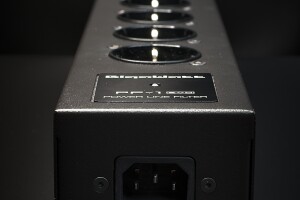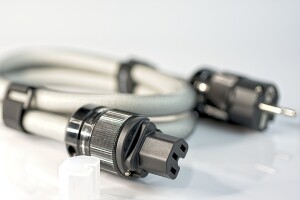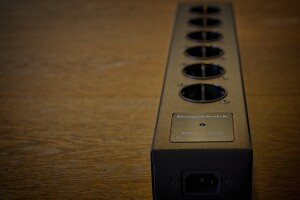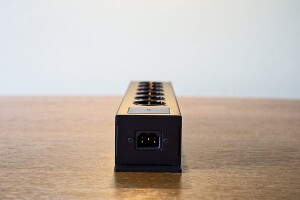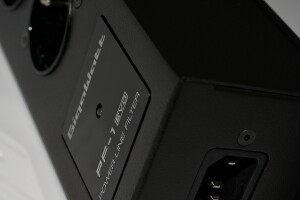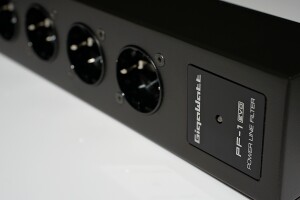This time for a test I received a new product developed by a renown Polish specialist offering current-conditioning products, the Gigawatt PF-1 EVO. Let’s check how much this Gigawatt’s EVOlved middle model of the current power distributors lineup has to offer.
Introduction
For years, most of the audio and video systems users accepted quality of the current supplied by the power grid as a given, without even giving it a thought. The assumption was simple – the manufacturers of the said systems certainly had made sure that the power supplies sections of those devices coped properly with whatever power grid fed them to ensure an optimal sound and/or image quality. The thing is, however, that over the past 20-30 years, power consumption due to millions, or rather billions and billions of electrical and electronic devices, that have become a necessity in every home, has increased tremendously. And with that also the level of noise and various types of interference that are fed back into the grid from all these electric/electronic products, hence polluting the power and causing audio and video systems not to perform optimally at all. Thus most lovers of good sound and/or video are forced to try and eliminate as much of this “dirt” coming from power grid as possible utilizing specialized products. And because the demand for such goods has increased significantly, so has the supply and variety of them.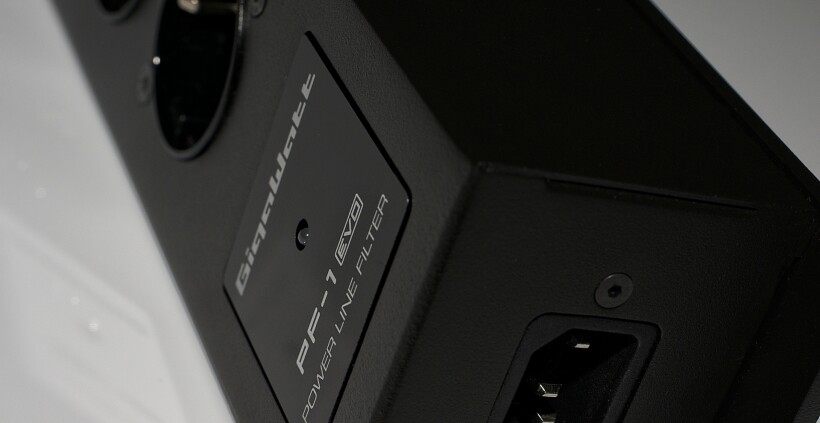
Our Polish Gigawatt is one of the best, worldwide appreciated specialists that has been satisfying the demand for audio and video systems users in this particular highly specialized market segment for many years. The company has been operating under this name since 2007, but it is, after all, the direct successor of another one called Power Audio Laboratories, that was founded back in 1998. In other words, it benefits from more than 20 years of experience of Adam Szubert, the head of Gigawatt, and previously a co-founder of PAL, and his team. In the current lineup you can find almost everything your system may need when it comes to power related products. There is an in-wall power cable and actually my system has been benefiting from it for several years. There are wall sockets, power strips, conditioners, power cables and even audiophile fuses. Let’s not forget that the Gigawatt team has also added their five cents to the latest generation of Marton amplifiers, for example the remarkable Opusculum Reference v.3 (see HERE).
From the start, the company has been working hard for a reputation of a reliable, innovative manufacturer, which allowed them to conquer not only the Polish, but also many other markets around the world. Not only are their products currently available in many countries on several continents, but you can often spot them at the world’s largest audio shows powering numerous systems, including the top ones. Curiously, these are not always systems set up by Gigawatt distributors. It suggests that other brands looking for the best power solutions, best ways to present their own products often reach for the Polish devices as well, which clearly proves their value.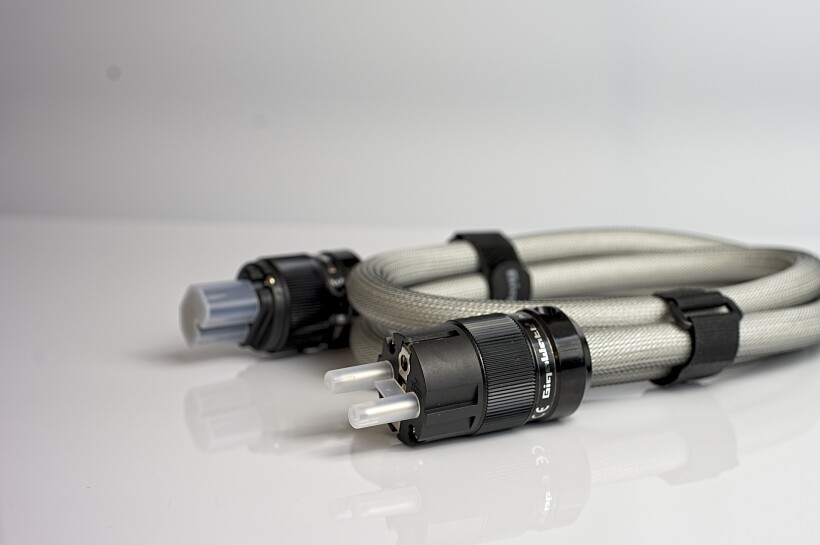
Over the years, the Gigawatt team has consistently developed their lineup. The point has never really been about multiplying the number of offered models, but rather in the constant search for new and better solutions and focusing on making the lineup as good as possible. The popularity of even the oldest models, such as the PF-1 power strip, which has sold really well for many years, means that the strategy of improving (one could call it: an EVOlution) instead of completely replacing models with new ones (which would constitute a revolution) has been working pretty well. And so, over the years Gigawatt introduced next generations of well-known products, with the latest one called EVO (derived from, obviously, an EVOlution, to emphasize company’s philosophy). The main modification one finds in the reviewed PF-1 EVO compared to previous generation is the use of higher quality, better performing internal cabling. The 2.5 mm2 cabling used previously have been replaced with the proprietary GigaWatt Powerlink 4 mm2 OFHC copper wire based cabling to achieve even better performance.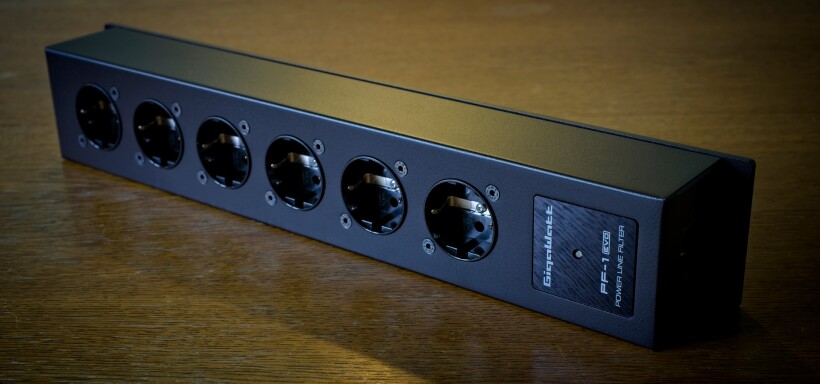
Design
On the outside, the PF-1 EVO looks just like a solidly constructed and elegantly finished power strip with six sockets. Weighing 4 kg, it does fell quite heavy and the sturdy, very well-made and finished metal housing adds on to general positive first impression. The version provided for testing featured GigaWatt G-040 Schuko sockets, designed and manufactured by the company in-house. However, there are also versions available for the US (NEMA 5-20R) and Australian (AS/NZS 3112) customers. According to the manufacturer, the sockets’ contacts are made of brass and silver-plated without the use of intermediate metals such as copper or nickel. A large contact surface and a thick silver layer guarantee reliable contact with pins of the inserted plugs. The sockets have also been subjected to cryogenic treatment and demagnetization process. Not necessarily an audiophile element, but valuable for all music lovers who are parents at the same time, i.e. integrated anti-surge shutters, will effectively protect kids from sticking anything into the sockets.
Compared to my PF-2 mk2 strip, the housing of the tested strip, although also solid and made of metal, effectively shielding it against RFI (radio frequency) and EMI (electromagnetic) interference is significantly smaller in height. It is equipped with one, instead of two, LED indicating correct operation and a high-class IEC socket enabling the use of any power cable. Gigawatt proposes their own PowerSync Plus, 1.5 meters long one as part of the set. Yet, they also suggest that with higher models one can achieve even better results.
The PowerSync Plus cable features 3 x 2,5mm2 (OFHC) copper runs with 12 conductors in each of the three runs, with the copper additionally subjected to annealing to obtain homogeneous structure and better conductivity. The drain wires features seven conductors of the same type. As a dielectric Gigawatt uses the PE. The whole is wrapped tightly with aluminum foil static shield, PVC and flexible external isolation. The outer jacket is made of dense fiberglass braid and nylon mesh. As a result, the PowerSync Plus cable is quite thick, with a diameter of almost 15mm. It is terminated with high-quality connectors with a large contact areas that ensure a reliable current flow. The contacts have been demagnetized. All conductors are mechanically connected without soldering, which guarantees reliability and optimal operation.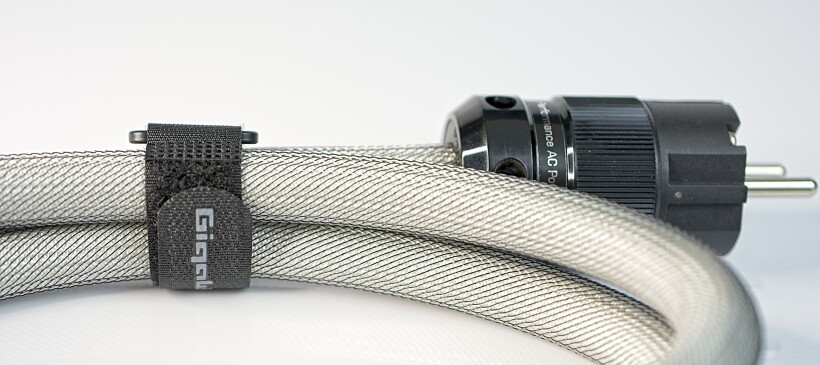
The PF-1 EVO is built using high quality elements. Any interference from power grid is filtered in a RLC filtering block. It is built using metallized polyester capacitors with low inductance and an IP (Iron Powder) filtering core. All components of the filters are soldered to a massive PCB with large cross-section of the traces, with silver solder. As usually (in the case of Gigawatt products) designers decided not to use traditional protective elements, such as wire or thermal fuses. The manufacturer believes that they limit the free flow of current to the protected circuits, and thus have a negative effect on the sound quality. Protection against over-voltage and power surges is guaranteed by a multi-stage protection circuit, composed of plasma sparks and new generation of UltraMOV varistors. Those elements, operating together with a well designed, modern power grid, ensure a complex protection against over-current and over-voltage.
The PF-1 EVO also uses an innovative power distribution system, a proprietary Gigawatt solution. It features massive second generation distribution rails made of polished high purity cathode copper bars (Cu-ETP).This system distributes the current directly to each pair of output sockets, using crimped and screw-tightened connections. As I’ve mentioned earlier, the internal wiring of the strip is made using the GigaWatt Powerlink copper cable (OFHC) with a cross section of 4 mm2. The use of star connection topology and high conductivity and a massive 30 mm2 cross-section of each rail ensures even and stable power distribution regardless of the load of individual strip outputs.
Sound
I remember that a dozen or so years ago we didn’t even really discuss power products during our audiophile meetings organized to listen to compare some audio components. The topic almost did not exist – we compared loudspeakers, amplifiers, CD players or phono cartridges, and sometimes, if somebody insisted, cables (but rather signal, not power ones). Today, power in audio system is a topic as important as almost any other one. People are passionately discussing the advantages of passive current filtering over active one (or vice versa), if advanced conditioners are better than simple power strips/distributors (or the other way around), whether it’s better to use battery-based power source or the regular one, etc. etc. Most agree that it would be ideal to have one’s own-produced electricity from a renewable source in a closed grid, that is not exposed to any external (or internal) interference. Sounds great, doesn’t it? As most ideal solutions also this one remains an unachievable goal for most, if not all, of us.
Most of us have to use whatever the power grid provides, hence the need for some kind of „power improving” device is quite common. Many people think that the simplest solutions are the best – the amplifier should be connected directly to the wall socket not to limit its dynamic range, and the power for other components should be slightly filtered, not too much, mind you, i.e. using a power strip rather than a conditioner. Interestingly, the latter ones, partly due to clearly higher prices, are usually used in high-end systems, because, in practice, their more advanced designs more often than not work better in such cases than simpler solutions.
As for amplifiers – in principle I agree with the idea of connecting them directly to wall outlets, although, as I wrote in the test of the already mentioned, powerful Marton Opusculum Reference 3, a high-quality conditioner, in this case the… Gigawatt PC-3 SE EVO +, which I’ve been using on a daily basis for some time now, by no means introduced any restrictions, in dynamics or otherwise, that I was able to hear during the said test. The same conditioner of the Polish manufacturer powers most of my system and reviewed devices on a daily basis, and only when I run out of free sockets during more complex tests, do I connect some components to the Gigawatt PF-2 mk2 strip, a model one level up from the tested one.
The exception in my system is the GrandiNote Shinai integrated amplifier (solid-state, Class A, 2 x 30W), which is connected directly to the wall sockets with two power cables. The point is not really that it sounds better this way, because it sounds equally well connected to the high-current Gigawatt conditioner’s sockets, but rather in… convenience. The conditioner features two such high-current sockets suitable for amplifiers, so if I used both for my integrated, then I would have a problem with any other one delivered for a review. Having Shinai plugged directly to the wall I don’t have this problem. Most reviewed ones are plugged into Gigawatt’s conditioner and it works perfectly fine.
Summa summarum, my system (all sources and preamplifier, when used) simply performs better connected to the conditioner. Obviously, this model is significantly (more than 5 times) more expensive than the strip, so the comparison is not entirely fair, but it does not change the fact that when looking for the best sound I decided to go with the Gigawatt PC-3 SE EVO+ conditioner, and the strip is sort of an auxiliary unit. One should remember, though, that the impact of power product on the sound also depends to some extent on the connected component itself. Some of them use high quality power supplies, some not so good ones (also in the sense of dealing with noise and interference coming from the power grid). So depending on the case an influence of a power product, such as the PF-1 EVO, may be significant and sometimes only relatively small, although it should always be noticeable. At least it should be based on my experience.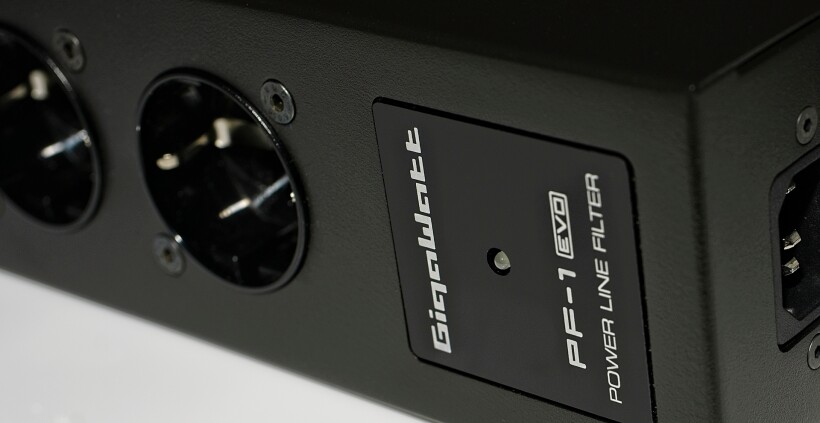
When I received the latest power strip, the PF-1 EVO, or, to be exact, a new version of a well-known product, that’s been on the market for years, I had a dilemma – what should I compare it to, to the conditioner or the more expensive strip, that I both have had in my system for a few years, or maybe to a wall socket? Or maybe to a generic power strip? The problem, sort of, solved itself because I first switched all the sources to the PF-2 mk2 strip, so I had no choice but to notice the difference compared to the PC-3 SE EVO + conditioner. I felt somewhat relieved, when this comparison confirmed the correctness of the choice I had made some time ago – the advantages of the latter were clear.
Only after listening to the setup connected to the PF-2 mk2 for some time I started to compare both Gigawatt strips. This first switch (from the conditioner to the PF-2 mk2) was … I do not want to use the word “painful” because it would be unfair to a very good Gigawatt power distributor, so let me put it this way: clearly noticeable. It’s a bit like switching from 4K image to a HD one. The HD is still very good (and was the best for years), but, especially in head-to-head comparison it is simply not as crystal clear, detailed, vivid, colorful and saturated as the 4K. Which does not change the fact that the former still offers a very good performance and I could say the same about the PF-2 mk2. After just 2-3 hours of listening to the music with it in the system I almost forgot about the differences compared to the conditioner and simply enjoyed the music.
On the other hand, this second switch (and repeated successive switches of the two strips) resulted in surprisingly small audible differences. Surprisingly, because I expected bigger ones – after all, the price difference is significant. Apparently, however, the EVO generation solutions in Gigawatt’s products compensate for some of the differences that one would normally expect between these two models. Now there is also an EVO version of the PF-2 strip, but I haven’t had a chance to assess it yet. I suspect that the difference between the two EVO models (PF-1 and PF-2) is more significant. For now, (the former in the EVO version, the latter in previous one) it is quite small and it is a hint for those who want to buy a solid, high quality product offering above average value for money – just go for the PF-1 EVO. And only if you need additional, say, 15% increase in performance quality go for the PF-2 mk2, but be ready to pay for it significantly more. The low of diminishing returns in practice…
What can you expect from the tested power strip? Well-balanced, coherent, relaxed (in the sense -devoid of any nervousness), unforced and open presentation. There was virtually no audible limitation at the band’s extremes, the sound was open, full of air, instruments were breathing nicely, and at the same time I did not notice any signs of brightening or hardening of the sound. It is a matter of above mentioned well-balanced presentation – no part of the band is emphasized nor is any of them limited. The dynamics and high energy of the sound were also almost no different between the two models, although a small advantage of the PF-2 mk2 could be noticed. I don’t have any experience with earlier models of Gigawatt power strips (apart from the one I own, obviously), but from the descriptions of my fellow reviewers I remember that they mentioned a rather light sound or a slight shift of the tonal balance towards the upper end. And yes, the PF-2 mk2, and even more so the PC-3 SE EVO + certainly saturate, fill in the sound better and ensure it’s more weighty, but what the PF-1 EVO has to offer in these regards is absolutely fine, not lacking anything, and I did not recognize any clear tonal balance shift either.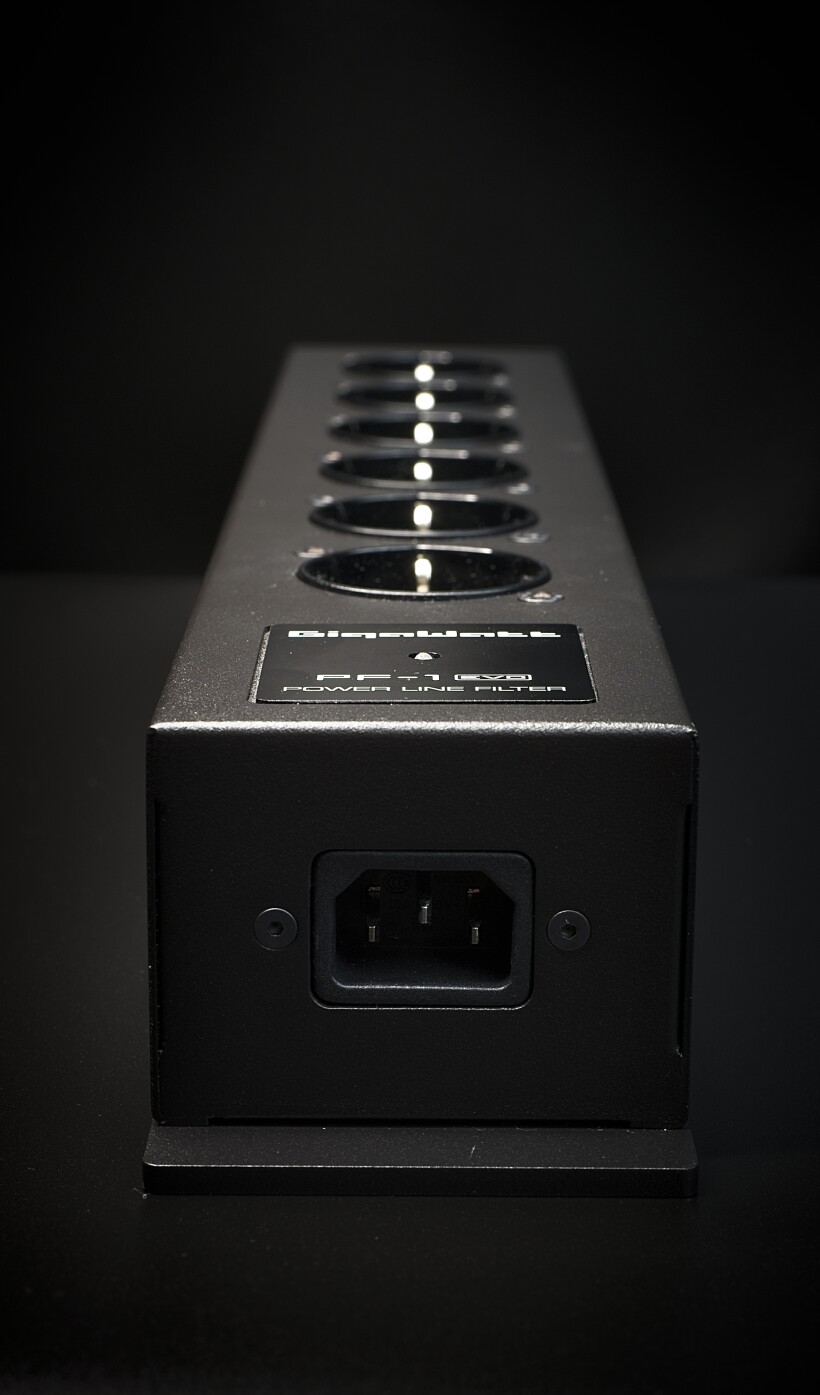
I must say that the longer I listened to the system plugged into the tested power strip, the harder it was for me to remember what it actually did worse than its larger/more expensive brother (or is it sister?). I spent several evenings just listening to various music albums with the DAC and the server’s and NAS linear power supplies (my music files source) plugged into the PF-1 EVO and I was able to completely forget about assessing the performance, the technical aspects of the recordings, the advantages of the more expensive, more advanced Gigawatt products. Instead I simply enjoyed numerous recordings and the Music, yes with the capital „M”.
I just sat there, in my chair, and in front of me, just a few meters away, the fabulous Patricia Barber played her piano and sang (almost) live for me. I closed my eyes and there she was, like a magnet attracting my attention to her remarkable voice. I was able to let myself be carried away completely and pulled right into the middle of the world of beautiful musical sensations, and nothing bothered me at all. There was nothing in the sound, caused by, supposedly, lower quality power, that would not let me enjoy the performance to the full extend. That’s how I built my system to sound like and it does happen sometimes when I listened to some well-known recordings while testing significantly cheaper than my own components in my system, that they are able to hinder the familiar experience. Such components sometimes introduce clear limitations to some aspects of the sound, but not this time. The sound was as open, full of air, vibrant and colorful, the background was (almost) as black as I was used to, so I was able to fully enjoy it. Especially because it was also spatial and the performers seemed quite present. There was no lack of details, subtleties, shades and flavors in the sound. What more could one expect from an audio system and each of its components?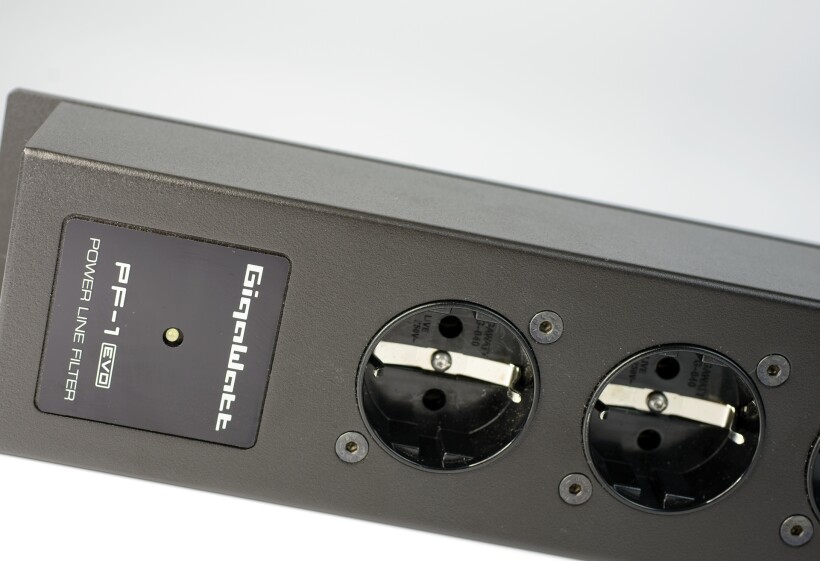
You might want each of these sound qualities to be a little “bigger/better/faster/more”. No problem. Dig deeper into your pocket/bank account and buy the PF-2 mk2 (second hand, or the new PF-2 EVO) instead to hear clear improvements in some aspects of the sound, or even deeper to get the PC-3 SE EVO + (or one of the other Gigawatt conditioners) to further improve the performance of your system. And of course it makes sense for those with high-end systems – they want to squeeze every bit of performance from them and are willing to spend a lot for that. But owners of inexpensive or even medium level systems, in order to provide them with optimized working conditions plus a certain degree of protection, most likely will invest in a decent power strip at a reasonable price. In my opinion, the PC-1 EVO is one of the most attractive propositions available on the market that introduces a noticeable improvement to the system’s performance while not imposing any clear restrictions to the sound compared to more expensive models, it does not hinder any aspect of the performance. And last but not least, the more expensive PF-2 mk2 doesn’t outperform the PC-1 EVO by much. The difference is really not that significant. Unless…
I learned about the „unless” part by plugging the analogue front end into both strips (interchangeably), i.e. my J.Sikora turntable (its top power supply) and the Thoeress tube phono preamplifier (see HERE). A statement such as „it was a completely different story now” would be a bit of an exaggeration, but the thing is that the differences between the cheaper and more expensive Gigawatt power strip models did become more significant in this setup. With the PF-2 mk2 there the sound was richer, more weighty with a slightly darker background, and at the same time the treble was more open and filled with even more air. Overall, the sound got fuller, richer with more clearly presented low-level information, which translated into a better, more enjoyable presentation of music. It’s not that with the PF-1 EVO it sounded bad, not at all! The thing is rather that while in the case of digital sources having a limited budget I would simply choose the tested model, convincing myself to spend more money on the top model of the Gigawatt power strip for the analog system would be much easier.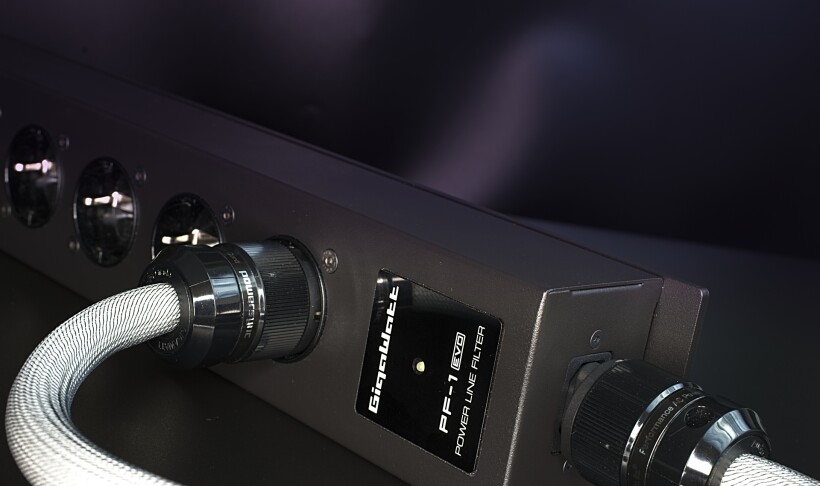
Summary
The Gigawatt PF-1 EVO is a reasonably priced power strip that can be used by both, novice audiophiles, but also those more advanced ones. The former investing in this model at the beginning of their path will not have to worry about the power supply for their audio / video system even after a few subsequent upgrades of other components. The PF-1 EVO will simply keep doing a good job. The latter, if they have not invested in power components in their systems so far, should do it and start by trying this inexpensive Gigawatt model. There is a good chance that it will allow you to discover a full potential of your system and elevate its performance to a new level. And it won’t cost you much.
Technical specifications (according to the manufacturer):
- Available socket types: EU (Schuko), US (Nema 5-20R), AU (AS/NZS 3112)
- Line voltage: 220-240 VAC / 50-60 Hz or 110-120 VAC / 50-60 Hz
- Maximum output power : 3 680 W
- Maximum current load: 16 A
- Absorbed impulse current: 13 000 A
- Power cable: Power Sync Plus, 1,5 m
- Dimensions (L x W x H): 420 x 75 x 60 mm
- Gross weight: 3,8 kg
Price (when reviewed):
- Gigawatt PF-1 EVO: 750 EUR
Manufacturer: Gigawatt
Associated equipment:
- Analogue front end: J.Sikora Standard MAX turntable, J.Sikora KV12 tonearm, AirTight PC-3, phonostages: Grandinote Celio mk IV, ESE Lab Nibiru V 5, Thoeress Phono Enhancer
- Digital source: a passive, custom server with WIN10, Roon, Fidelizer Pro 7.10, JCat USB Femto card with iFi power supply, Hdplex linear power supply for PC, JCAT USB Isolator
- D/A Converter: LampizatOr Pacific +Ideon Audio 3R Master Time (USB signal regenerator)
- Power amplifiers: GrandiNote Shinai, LampizatOr Metamorphosis, Accuphase E380, Circle Labs A200, Lavardin ISx Reference
- Preamplifier: Audia Flight FLS1
- Loudspeakers: GrandiNote MACH4, Ubiq Audio Model ONE Duelund Edition.
- Interconnects: Hijiri Million, Hijiri HCI-20, TelluriumQ Ultra Black, KBL Sound Zodiac XLR, David Laboga Expression Emerald USB, TelluriumQ Silver USB
- Speaker cables: LessLoss Anchorwave
- Power cables: LessLoss DFPC Signature, Gigawatt LC-3
- Power: Gigawatt PF-2 MK2 and Gigawatt PC-3 SE Evo+; a custom power line with Gigawatt LC-Y in-wall cable; Gigawatt G-044 Schuko and Furutech FT-SWS-D (R)
- Racks: Base VI, Rogoz Audio 3RP3/BBS
- Anti-vibration accessories: ROGOZ-AUDIO SMO40 and CPPB16 platforms and ROGOZ AUDIO BW40MKII feet, Franc Accessories Ceramic Disc Slim Feet and Wood Block Platform


